Yen Tu – A Journey Beyond the Mountains, Into the Quiet of the Soul
- Sunday, Apr 06, 2025, 10:07 (GMT+7)
Yen Tu – A Journey Beyond the Mountains, Into the Quiet of the Soul
Some places are not meant to be visited. They are meant to be felt. To be walked, breathed, and remembered long after you leave. Yen Tu is one of those places.
Tucked deep within the lush mountains of Northern Vietnam, Yen Tu is not your typical destination. It's not loud. It's not trendy. It doesn’t flash itself for cameras or beg to be seen. Instead, it waits—quietly, humbly, patiently—for those who are truly ready to see. I wasn’t looking for answers when I came to Yen Tu. I was simply trying to slow down. But this sacred mountain gave me more than I expected—it gave me a way back to myself.

Yen Tu Bamboo Forest
At dawn, the base of the mountain was still veiled in a thin blanket of mist. The kind of mist that moves gently, like it remembers the footsteps of thousands of pilgrims who’ve walked here before. There were no loudspeakers, no selfie sticks waving in the air. Just the soft sound of leaves rustling, the occasional murmur of temple bells echoing through the forest, and the quiet rhythm of my own breath.
I could have taken the cable car, of course. It would’ve been quicker. But there was something about walking that felt right. As if to truly understand Yen Tu, you had to earn it with your steps. The stone path rose steadily into the forest, weaving between bamboo groves and ancient pine trees. Light filtered through the leaves in golden slivers, and I found myself walking slower, not because I was tired, but because I didn’t want to miss anything.
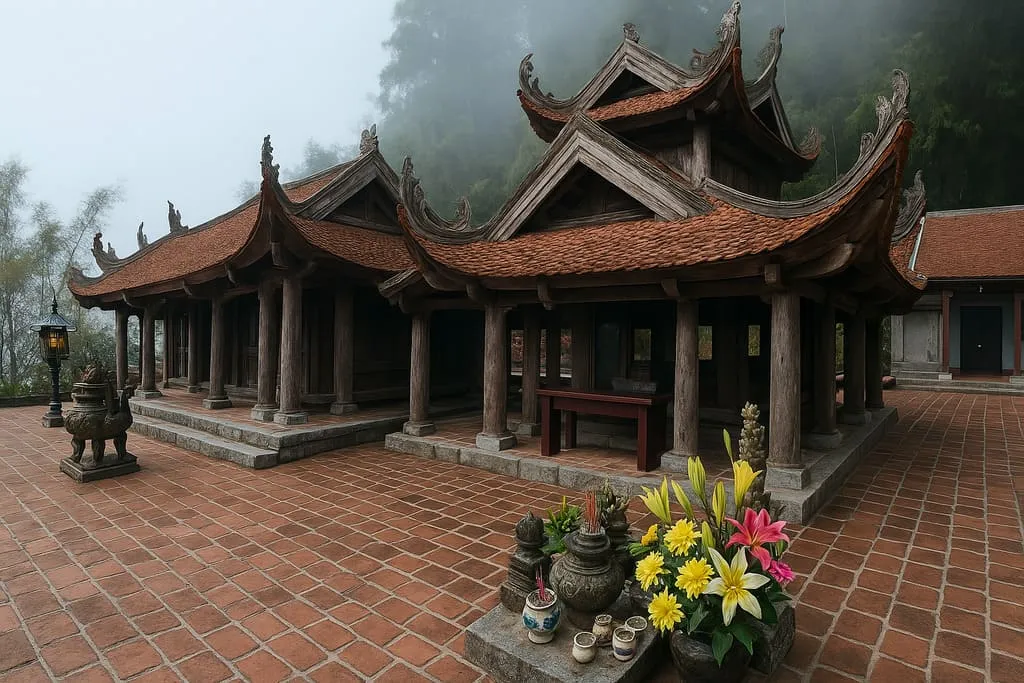
Hoa Yen Pagoda
There’s a weight to the air in Yen Tu. Not a heaviness, but a presence—like the mountain is watching you, listening, waiting for you to let go of your hurry. Along the way, shrines and temples appear like whispered secrets in the forest. Giải Oan Pagoda, the first significant stop, holds a tale of sorrow and sacrifice. Legend has it that the imperial concubines of the Trần Dynasty ended their lives here in grief when the king chose a life of renunciation. There is a gentle sadness in the stones, a sense of loss that lingers quietly under the sound of flowing streams.
Higher up, I reached Hoa Yen Pagoda, once the spiritual center of the Trúc Lâm Zen sect founded by Emperor Trần Nhân Tông. It was here that he laid down his crown and took up the life of a monk. Sitting on the moss-covered steps, I listened to the temple bell ring through the silence. It wasn’t just sound. It was memory. It was time itself, stretched thin and humming between the trees.
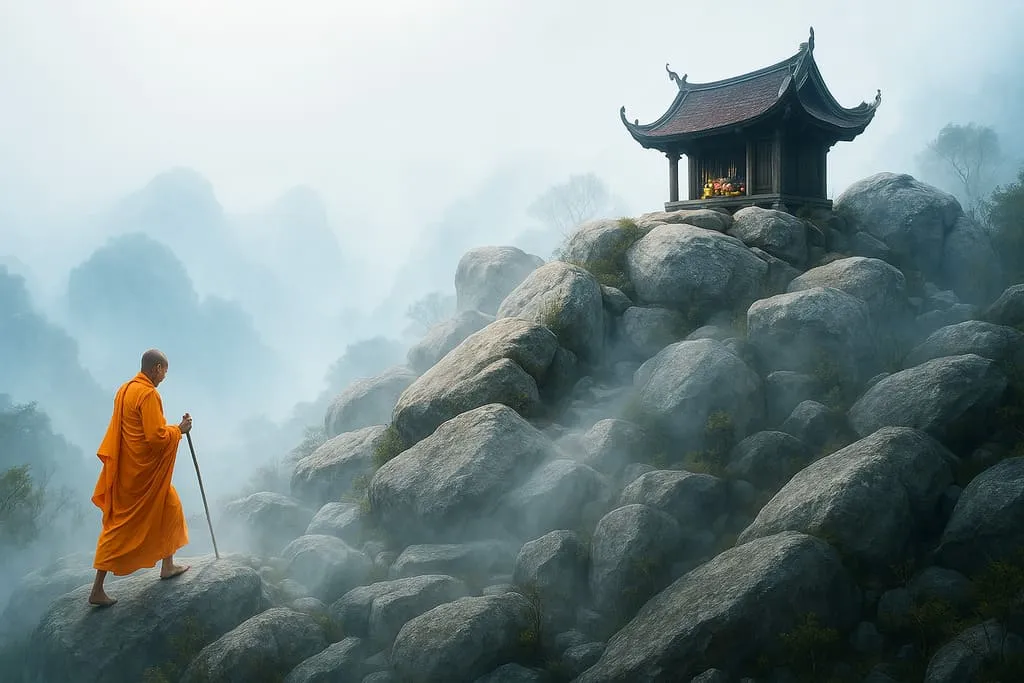
Copper Yen Tu Pagoda (Dong Yen Tu Pagoda)
Every step upward felt like shedding something. Tiredness. Worry. Noise. Somewhere along the trail, I stopped thinking about my phone, about emails, about whatever deadline I’d left behind. The climb demanded all of me, and in return, it gave me space. Real space. Space to feel, to breathe, to just be.
And then, after thousands of steps, I arrived at the top. The famous Dong Pagoda—built entirely of bronze—sits like a jewel at the summit, 1,068 meters above sea level. It was shrouded in drifting clouds, almost dreamlike. Standing there, above the world, with the valleys below swallowed by mist and wind rushing past like a forgotten song, I felt something I can only describe as stillness. Not silence, not emptiness, but stillness. A quiet that fills you up.
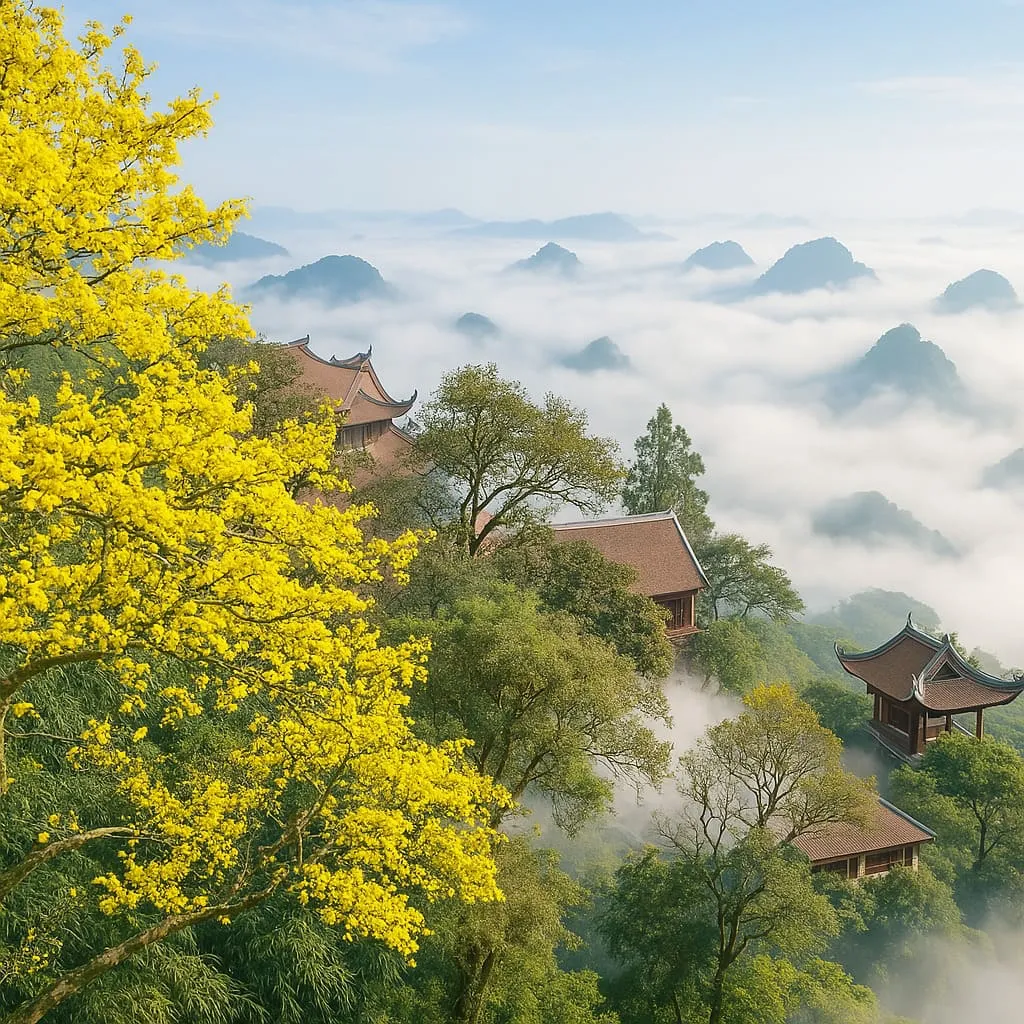
Sacred Yen Tu Mountain
I didn’t pray. I didn’t make a wish. I just stood there, letting the mountain hold me. I had come expecting to see something beautiful. I hadn’t expected to feel so weightless.
But Yen Tu isn’t just about temples or panoramic views. It’s about presence. In a world that moves too fast, here is a place that refuses to hurry. Where you walk to remember how it feels to move slowly. Where you climb not just for the view, but for the clarity that rises within you as you rise toward the sky.
If you visit during the spring festival months (usually from late January to March), you’ll find the mountain alive with pilgrims. People come in brown robes and quiet eyes, carrying offerings and hopes. There’s a profound respect in the air, as if everyone—regardless of religion—is united by something greater than belief: reverence. But for those seeking solitude, autumn is magical. The trees burn gold and amber, the crowds thin out, and the entire mountain seems to exhale.
There’s a tree I found, not marked on any map. Locals believe it’s over 700 years old, said to have been planted by the emperor himself. It stands twisted and strong, its roots clinging to the cliffside like hands remembering a promise. Beneath its shadow, I sat for a while. And for the first time in a long time, I didn’t feel like I had to be anywhere else.

Yen Tu Ancient Pine Road
Yen Tu isn’t the kind of place that gives you instant gratification. It won’t shout for your attention. But it stays with you. In the rhythm of your breath as you walk. In the quiet strength of stone steps weathered by centuries. In the way your shoulders drop when you finally let go of what doesn’t matter.
When people ask me why they should go, I don’t talk about the temples or the views. I tell them this: go because you need a place that doesn’t ask anything of you. Go because you want to remember what it feels like to be slow, to be small, and to be absolutely alive. Go because sometimes, the most sacred journeys are the ones that take you home to yourself.
Yen Tu may be rooted in Vietnam’s past, but its gift is timeless. And if you let it, it will change the way you see everything.

 CHECKIN.VN
CHECKIN.VN

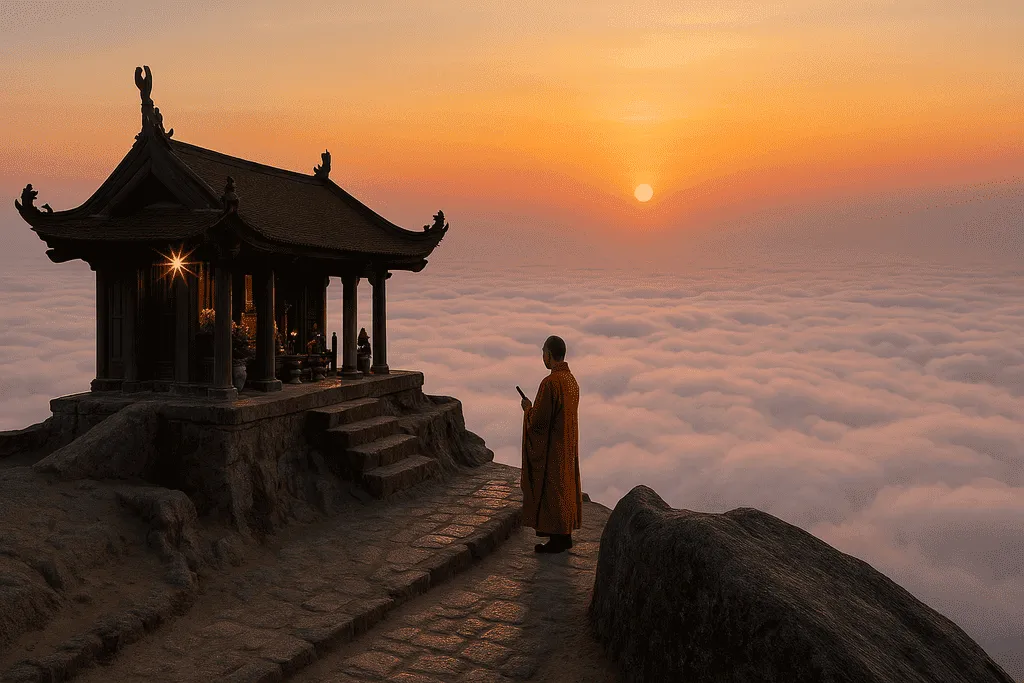
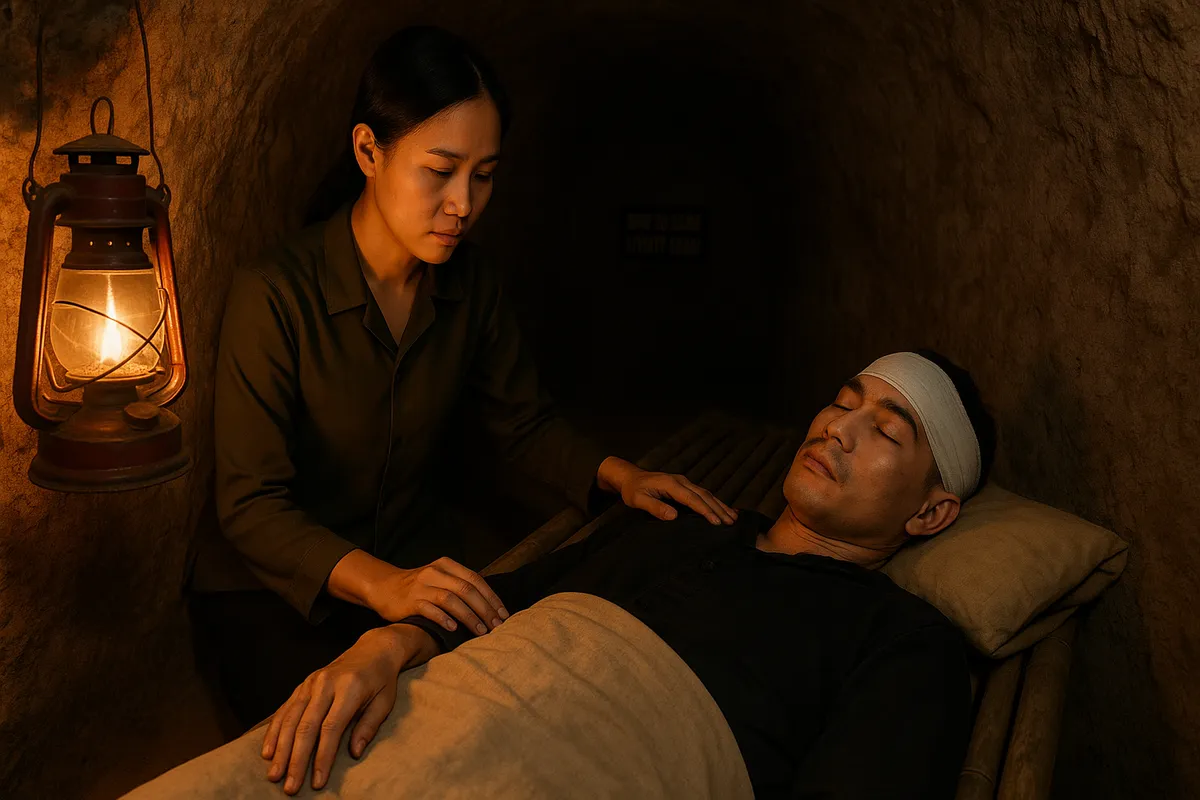


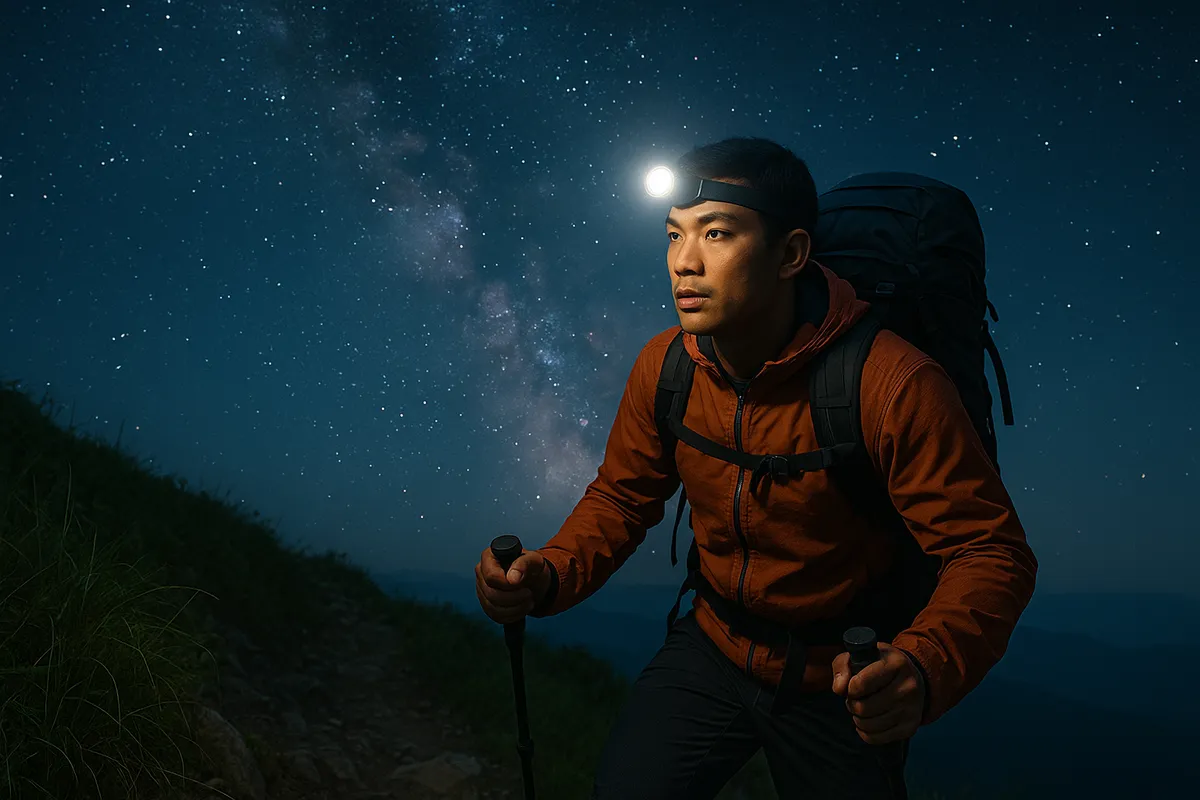
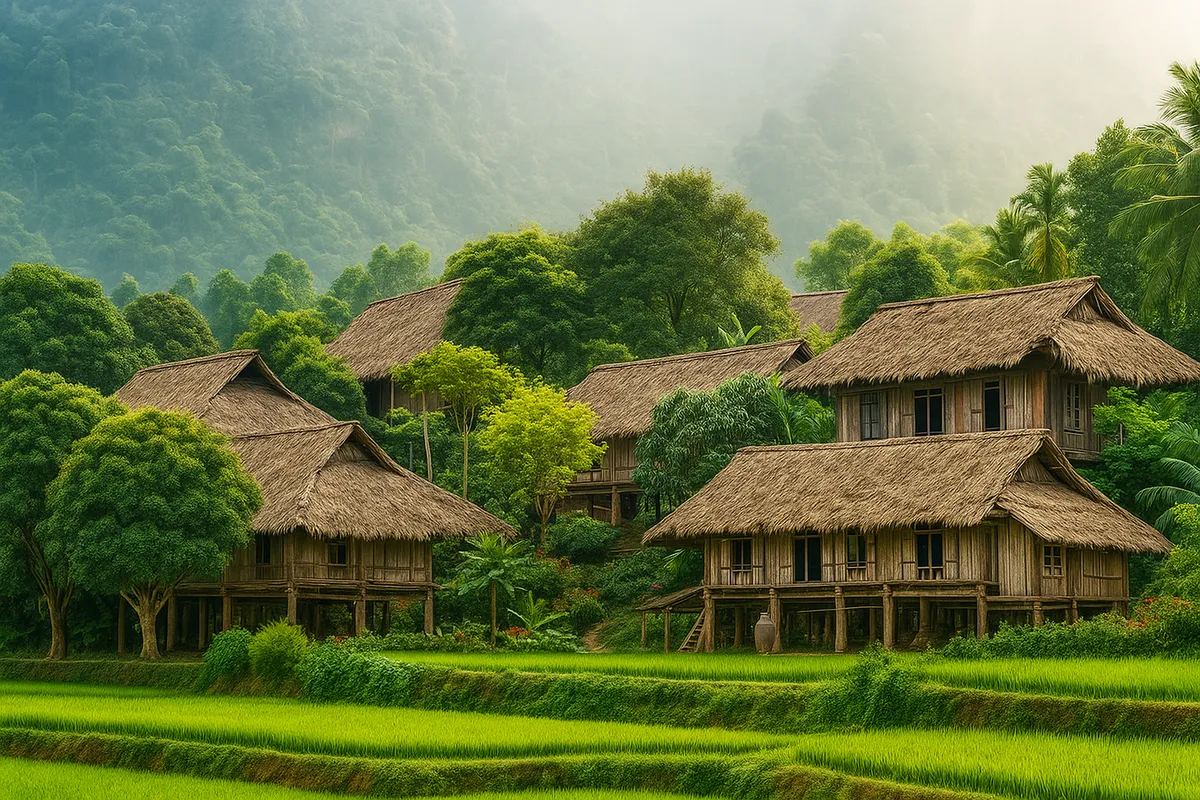

Share on